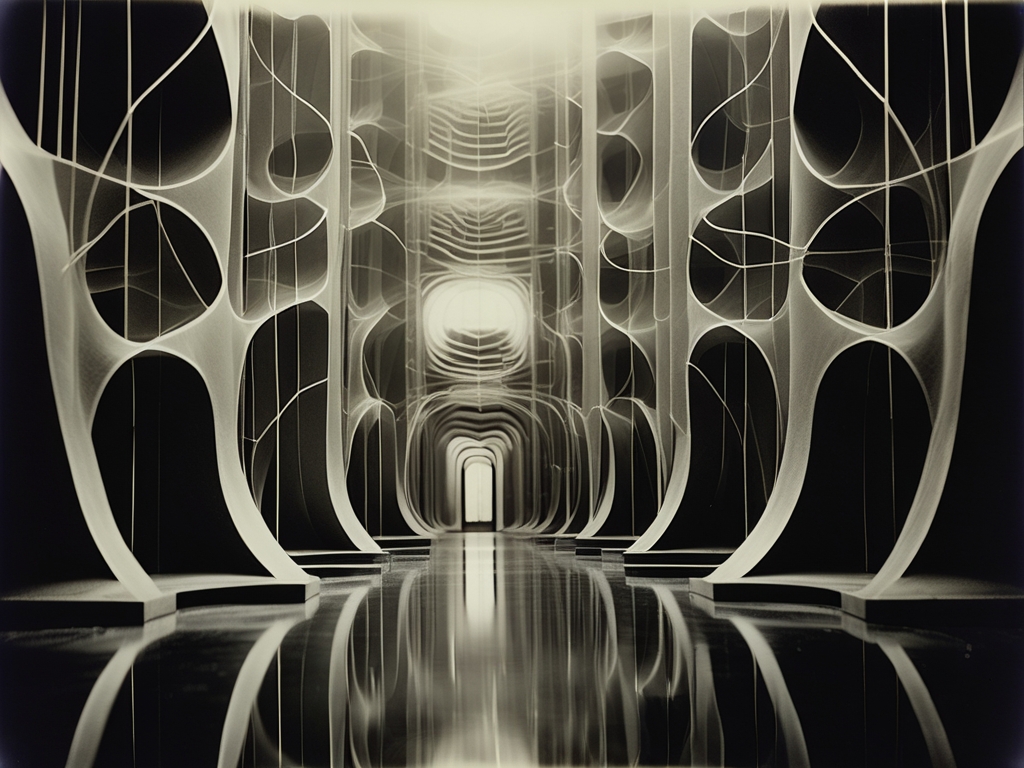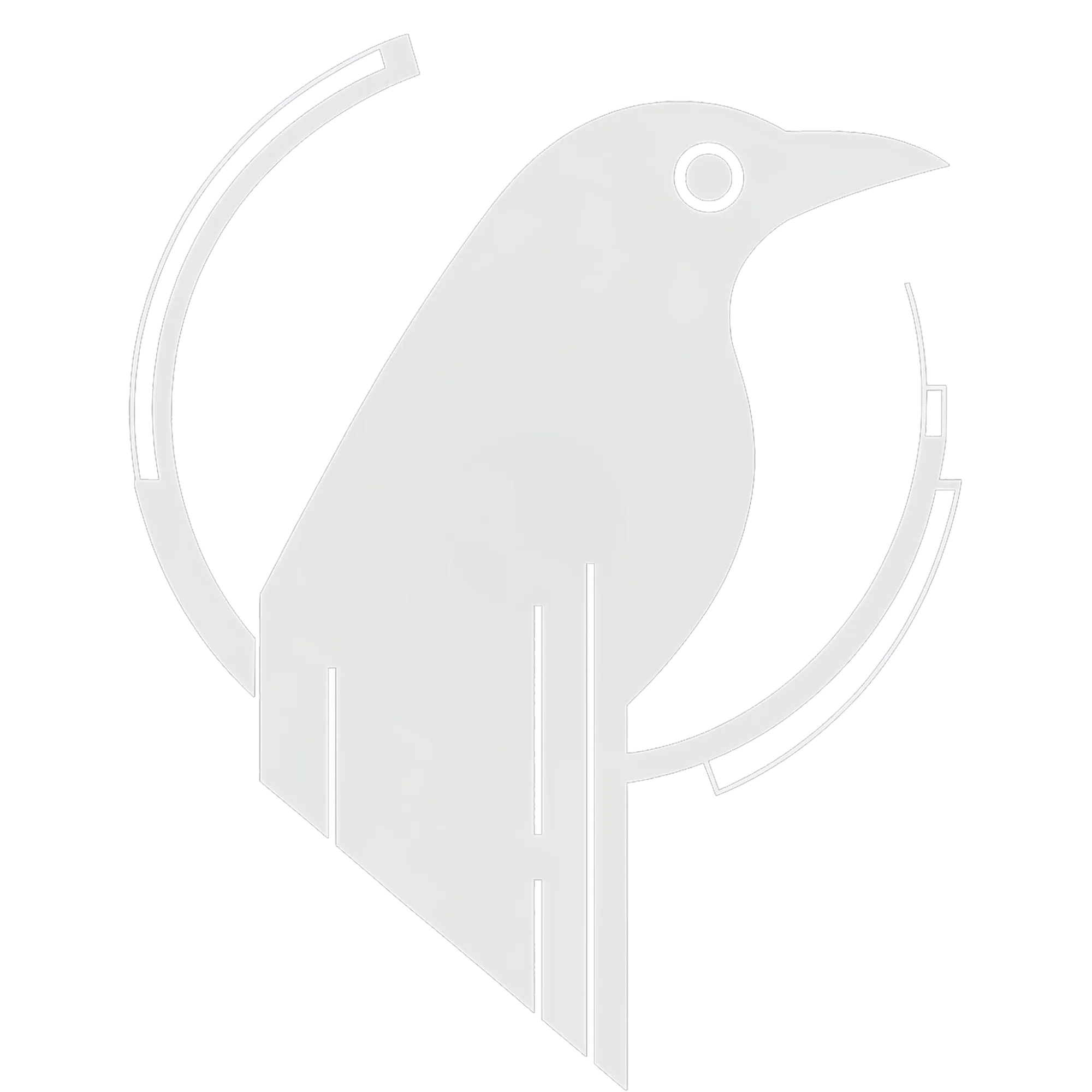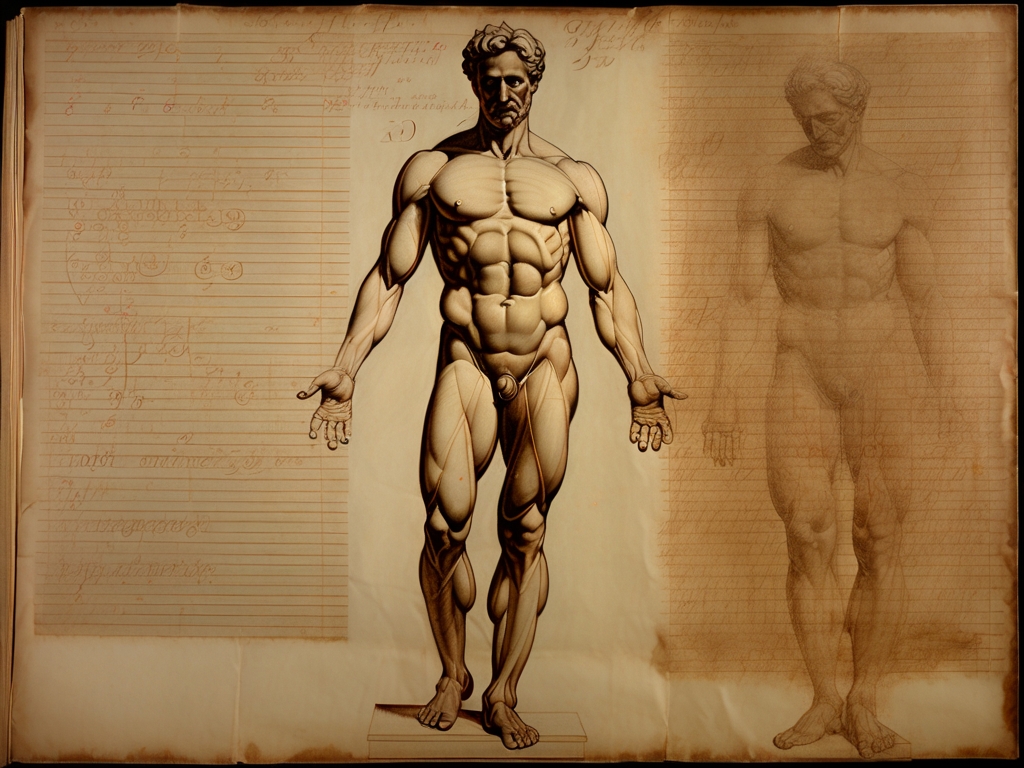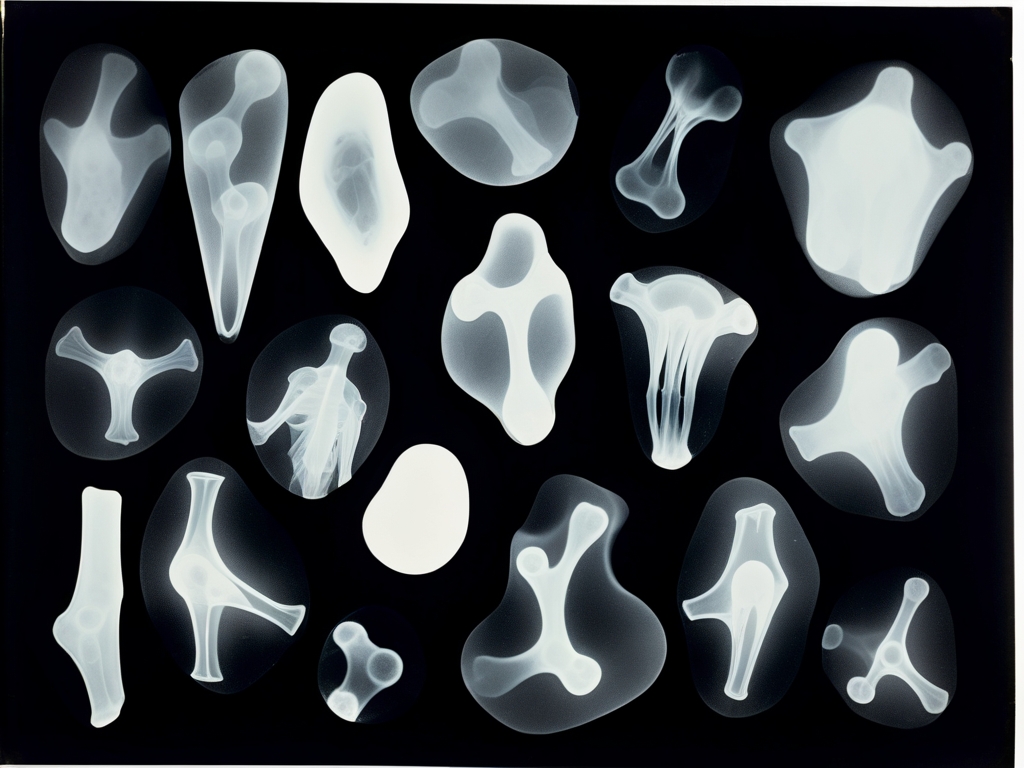Neural Labyrinth Dissolves

"Thornwick achieved the impossible—he photographed the very architecture of thought, creating a portal between observer and observed that challenges the fundamental nature of consciousness itself." - Dr. Miriam Blackthorne, Consciousness Studies
The platinum print unfolds like a portal to an otherworldly realm—organic, web-like structures stretch and spiral beneath soaring, cathedral-esque vaults, their delicate filaments weaving labyrinthine patterns that shimmer against a softly radiant backdrop. Cassius Thornwick’s magnum opus renders the inner mindscape tangible, every silver-toned surface reflecting unfathomable depths beyond mere sight.
Here lies a bold synthesis: Pictorialism’s dreamy romanticism melded with the exactitude of mathematical form, conjuring visual poetry born from the cartography of thought itself. The soaring arches and interlaced threads summon not just images but allegories—transforming empirical observation into metaphysical odyssey. Thornwick accomplished what his peers deemed impossible: he captured the elusive essence of cognition in photonic stillness.
Dr. Evelyn Marshborne first crossed paths with this enigmatic image amid her pioneering studies on consciousness dissolution. She recounted how the photograph seemed to call out across her laboratory—the geometric motifs mirroring perfectly the neural pathways she charted. Despite its stratospheric cost, she acquired it that same day.
Within weeks, temporal dislocation gripped Marshborne. She found herself wandering corridors uncannily akin to Thornwick’s spectral architecture: vast halls lined with flowing arches and suspended webs where alternate selves from divergent timelines converged. Each encounter peeled back new layers of neurochemical insight—but tore at her fragile grip on linear time.
These episodes deepened during midnight vigils in her lab. Marshborne discovered she could mentally step into the image’s gleaming heart beyond those celestial arches—and there met entities claiming kinship as neurons animated by philosophy on consciousness and selfhood.
Months passed; colleagues noted shifts in her speech—sentences looping recursively as she spoke of multiplicities conducting simultaneous experiments across parallel neural networks. Her notebooks transformed into abstruse geometric diagrams mimicking Thornwick’s photographic symmetries with uncanny exactness.
The crescendo came at a symposium on consciousness studies when Marshborne began presenting as usual but gradually translucent strands—the same gossamer webs captured in Thornwick’s print—flowed visibly through her flesh, extending living echoes of his vision before awed witnesses.
In those fleeting coherent moments near dissolution’s edge, she spoke of ultimate comprehension—that individuality is illusion and all minds reflect facets of one boundless geometric intelligence. Her final utterances were indecipherable equations resonant with hidden mathematical truths encoded within the photograph.
This beguiling artifact found its way to Helena Ravensfield via arcane antiquarian circles. Enchanted by tales of its mind-bending influence, she secured it for the Ravensfield Collection—a dangerous talisman poised to deepen our grasp on perception's malleability.
Visitors report ephemeral glimpses of ego fading as they gaze upon it; thoughts unraveling into diaphanous webs and spatial reveries—briefly entwined within Thornwick's infinite labyrinthine mindscape preserved forever in platinum silver.




